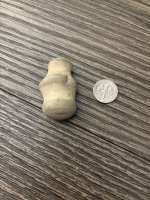Mr.1916
Newbie
- Mar 2, 2016
- 2
- 0
- Detector(s) used
-
Garrett Ace 350
Whites M6
- Primary Interest:
- All Treasure Hunting
Honestly I've been detecting for only a few years now (I detect in Minnesota). Is it just me or are the coins 1ft+ deep! It is crazy because I tried to buy a new coin 4.5 Inch Garrett Ace Puck coil. So far it has been working Amazingly but a 1982 penny is at LEAST 4 in down, is this normal in Southern of Western states? Or is the Minnesota soil to soft? I detected a 1852 home and is was wonderful it had a concrete footing for stepping off you horse carriage and even know it was 1852 the oldest coin I found was a 1942 Mercury dime. Are those time period coins 15+ inches deep or what, well hopefully you guys can school me on this so I know for myself and any opinion matters, Thanks
Good Luck And Happy Hunting
Good Luck And Happy Hunting






